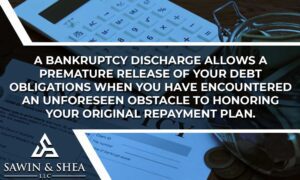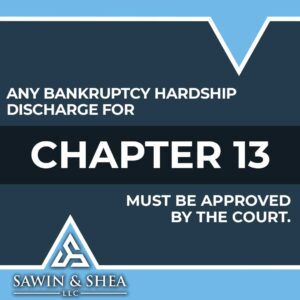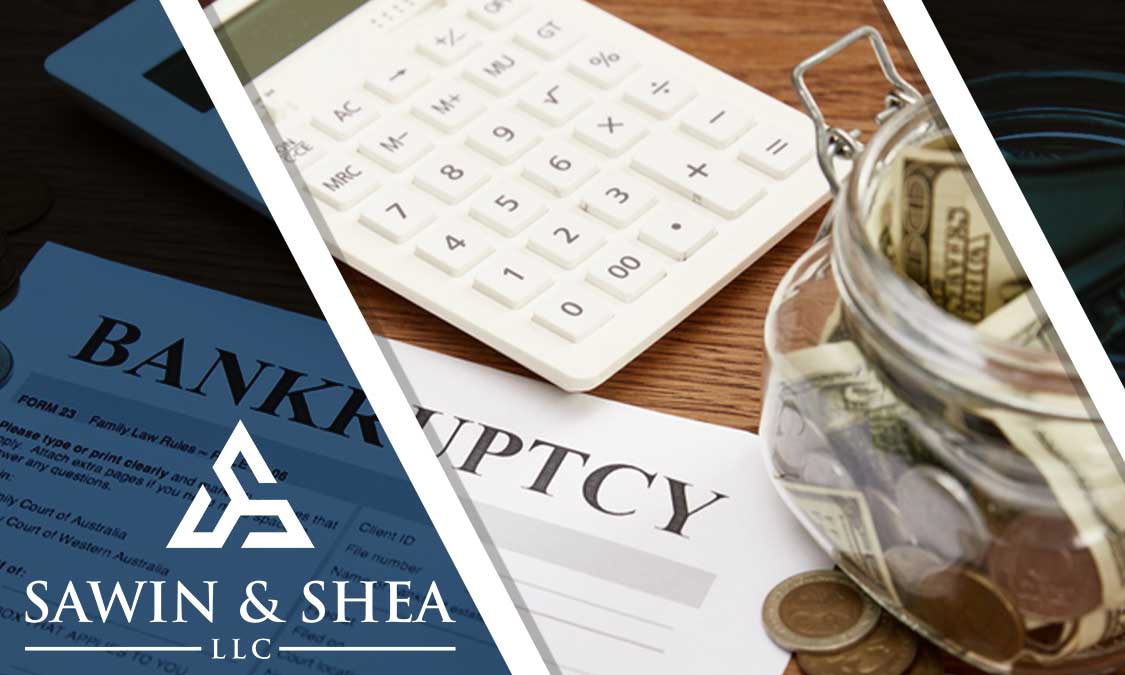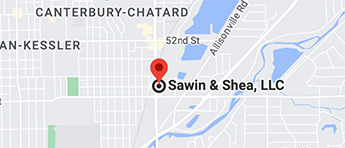Filing for Chapter 13 bankruptcy is a positive step during a challenging time in your life. Instead of fighting with your creditors, you work with them proactively in the bankruptcy process to resolve your debts. In some cases, you may be eligible for a Bankruptcy Hardship Discharge.
Chapter 13 bankruptcy involves entering into a reorganization plan to protect assets, catch up on arrears on houses or cars, and force unsecured creditors to take reduced amounts based on what the bankruptcy law requires that you pay them. Over three to five years, you resolve your debts and get a fresh financial start.
But what if something unexpected happens along the way, like an illness, death, or job loss? It may be impossible for you to continue making your payments on time.
In a situation like this, a bankruptcy court will sometimes approve a bankruptcy hardship discharge. Here’s what you need to know about the process and your potential eligibility.
What is a Bankruptcy Hardship Discharge?

A bankruptcy discharge allows a premature release of your debt obligations when you have encountered an unforeseen obstacle to honoring your original repayment plan.
To receive the discharge, you must prove that you qualify in three ways:
- You must demonstrate that the situation preventing you from honoring your Chapter 13 repayment plan is beyond your control and you should not “be justly held accountable.”
- You have already paid your creditors at least as much as they would have received in a Chapter 7 bankruptcy, also known as a liquidation bankruptcy.
- You must show that your current plan can’t be modified, so you need a hardship discharge.
Please note that you don’t just have to meet one of the above qualifications. You must meet all three to be granted a hardship discharge. Plus, your debts must meet certain criteria, as discussed in the next section.
How Does a Chapter 13 Hardship Discharge Work?



Any bankruptcy hardship discharge for Chapter 13 must be approved by the court. The trustee and judge will look at whether you’ve met the three criteria listed above and determine whether your debt itself is fully eligible for this type of discharge.
Ineligible types of debt include secured debts, priority debts, and nondischargeable debts. If any of your debts are of these types, an application for a hardship discharge might not be the right way to proceed.
For example, if you have an automobile loan secured by a car, it is not eligible for a hardship discharge. An ineligible priority debt could be child support or alimony payments owed, which can’t be discharged despite the hardship in your life. A student loan is an example of a nondischargeable debt under federal law.
Potentially eligible types of debt include unsecured debts, non-priority debts, and dischargeable debts. Common types of unsecured debt include medical bills and utility bills. Non-priority debts might include credit cards or a personal loan. Dischargeable debts include a wide range of debts like loans and credit accounts.
What is the Connection Between Debt and Death in a Bankruptcy Hardship Discharge?
Death is one of the most common precursors to a Chapter 13 bankruptcy hardship discharge. Imagine that you were successfully making your payments but your spouse suddenly died and your household income was cut in half.
Depending on your other circumstances, you might qualify for a hardship discharge. You’d need to prove to the court that your spouse has died, your household income has changed, and you also meet the other criteria.
You’ll need to show that the situation was beyond your control, you’ve already paid an amount beyond what you would have paid in Chapter 7 bankruptcy, and your current Chapter 13 plan can’t be modified. All of your debts must be eligible types to proceed with the bankruptcy hardship discharge.



To see if you’re eligible and potentially move forward with applying for the hardship discharge, talk to an experienced bankruptcy attorney who has handled these discharges successfully in the past.
Are You Eligible for a Chapter 13 Hardship Discharge? Ask Sawin & Shea, Indiana Bankruptcy Attorneys
If you still have questions about your eligibility for a Chapter 13 bankruptcy hardship discharge, please contact the experienced team at Sawin & Shea, LLC. We have been helping people navigate the bankruptcy process for years. Schedule a free consultation today at 317-759-1483.



